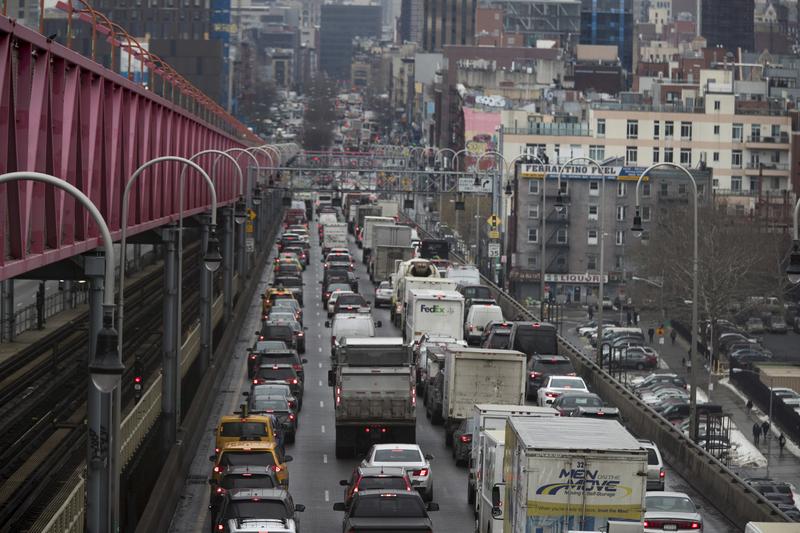
With six days to go before New York State’s 2020 budget is due, the prospects have improved for New York City becoming the first urban area in the nation to charge drivers entering its downtown business district.
But who will have to pay the toll and how much they’ll be charged remain large outstanding questions, New York Gov. Andrew Cuomo told WNYC on Tuesday.
“You’re at the five-yard-line so that looks good but you’re not over the goal [line],” Cuomo told Brian Lehrer. “So I’m cautiously optimistic.”
Cuomo was responding to the negotiating-in-public declaration that the New York Assembly has signed onto congestion pricing.
"We still have some details to work out but I would say the Assembly is ready to go forward on congestion pricing,” Speaker Carl Heastie told reporters on Monday. “I wouldn't say that if I didn't think I had the votes.”
The details being worked out are the same ones that have challenged the governor and legislators for months: how much of the revenue will go toward fixing not just the city’s subway and bus system but toward commuter transit, as well, and who’ll get a free pass.
Lawmakers want drivers who cross the major spans — the Verrazzano, George Washington, RFK and Tappan Zee/Mario Cuomo bridges — to be exempt from paying a second toll to enter the Manhattan business district.
“‘Carve out MY bridge, the bridge MY constituents use,’” Cuomo said, paraphrasing various Senate and Assembly members. “But you carve this out, carve that out — it’s a smaller [revenue] pie, and we need the pie to fund the congestion, and that’s what we’re going through now.”
Under the tentative deal proposed by Cuomo and Mayor Bill de Blasio, cars on the FDR Drive would be spared tolls if they pass through Manhattan without entering the business district, below 61st Street.
Cuomo said it would take about two years to build the tolling infrastructure for congestion pricing, meaning it wouldn’t generate any revenue until 2021 at the earliest, well into the next five-year capital plan for the MTA.
Cuomo also emphasized that congestion pricing is just one part of a larger reform of the MTA. He has come up with a 10-part plan to massively restructure the agency and to ensure one person is held accountable for its performance.
The fees collected from a congestion-pricing plan is estimated to raise $1 billion dollars, revenue the city could use to generate an estimated $15 billion in the bond market. The MTA said it needed $40 to $60 billion dollars to modernize its infrastructure.
Other revenues under consideration would come from new taxes on legal adult-use marijuana, second homes worth more than $5 million and goods purchased over the internet.
Cuomo recently said he’s amenable to the so-called pied-a-terre tax initially proposed by State Sen. Brad Hoylman (D-Manhattan). Cuomo’s office estimated it would generate $9 billion, also by leveraging bond funding. But in his latest statement, Cuomo said the form of the tax is up for grabs.
“It could be a transfer tax. It could be an annual tax,” he said. “If there’s a better way to do it, fine.”
The real estate industry has pushed back against the pied a terre tax.
He said any proceeds would go to an MTA “lock box” and would inure to the benefit of the high-end property-owners.
“Because if you have a better transit system, those properties would be worth more,” Cuomo said.
